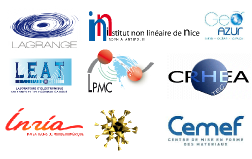The laser which came from the cold
A standard laser has usually two ingredients: a gain medium providing light amplification by stimulated emission, and an optical cavity providing feedback. However, there is currently a strong interest in more exotic laser systems, especially "mirrorless" lasers, in which the electromagnetic feedback is provided either by disorder (multiple scattering in the fain medium) or by order (multiple Bragg reflection). These mechanisms correspond, respectively, to "random lasers" and "photonic crystal lasers".
I will discuss two experiments, one demonstrating random lasing, and one demonstrating the one-dimensional version of photonic crystal lasing, in which both the gain and the feedback mechanisms are provided by a very dilute atomic vapor containing a few billion atoms, which are laser-cooled to microkelvin temperature.
